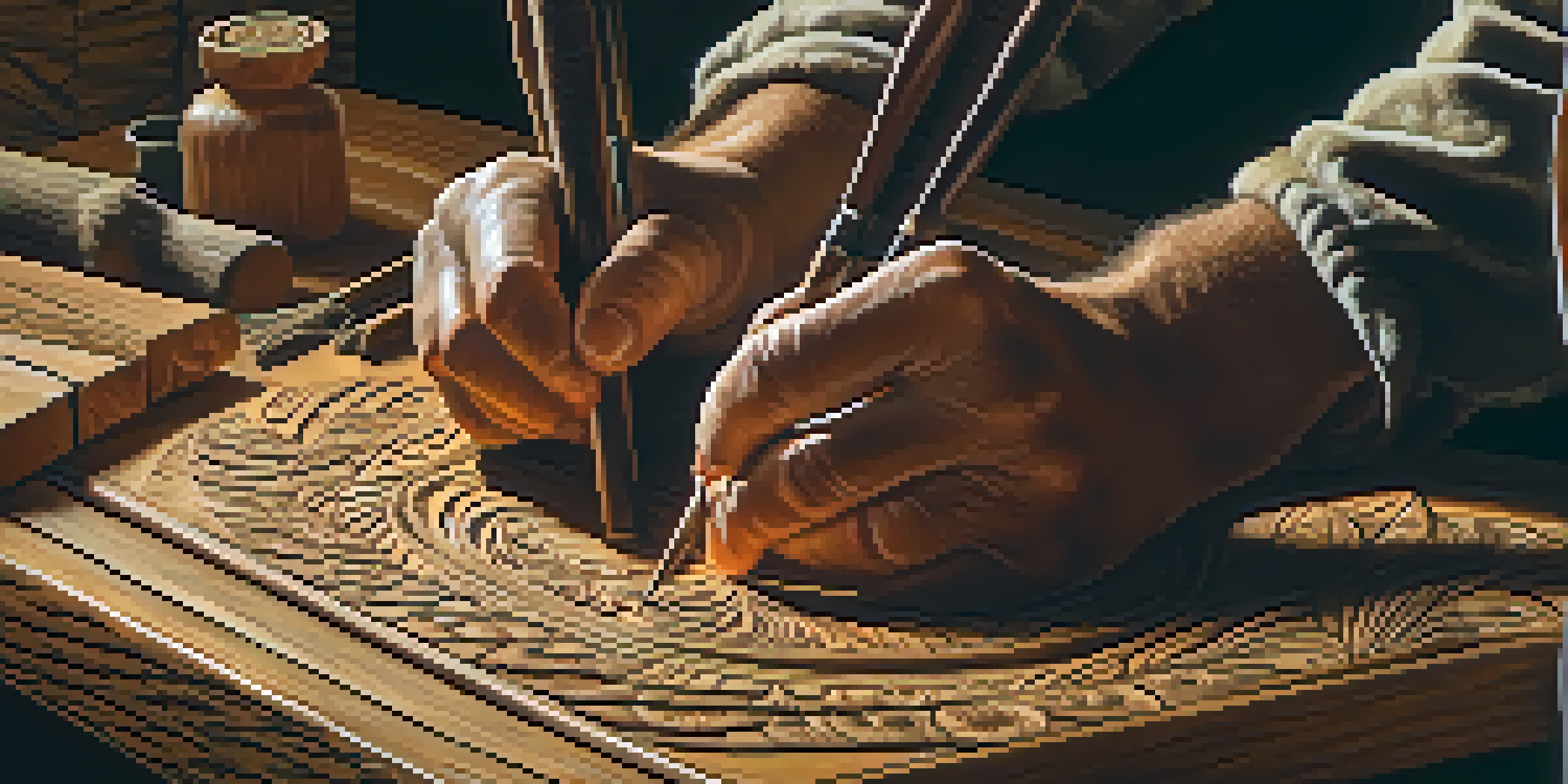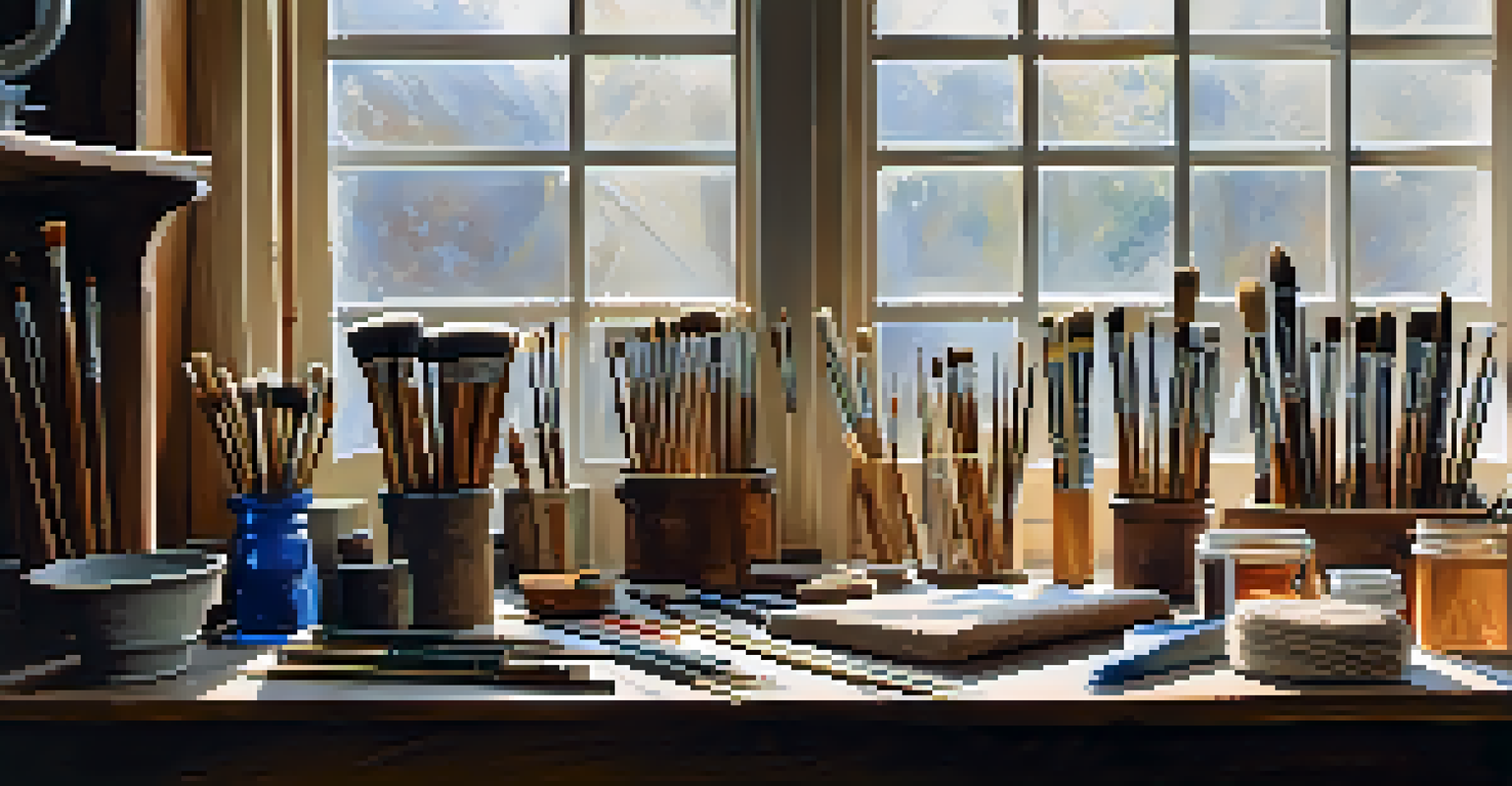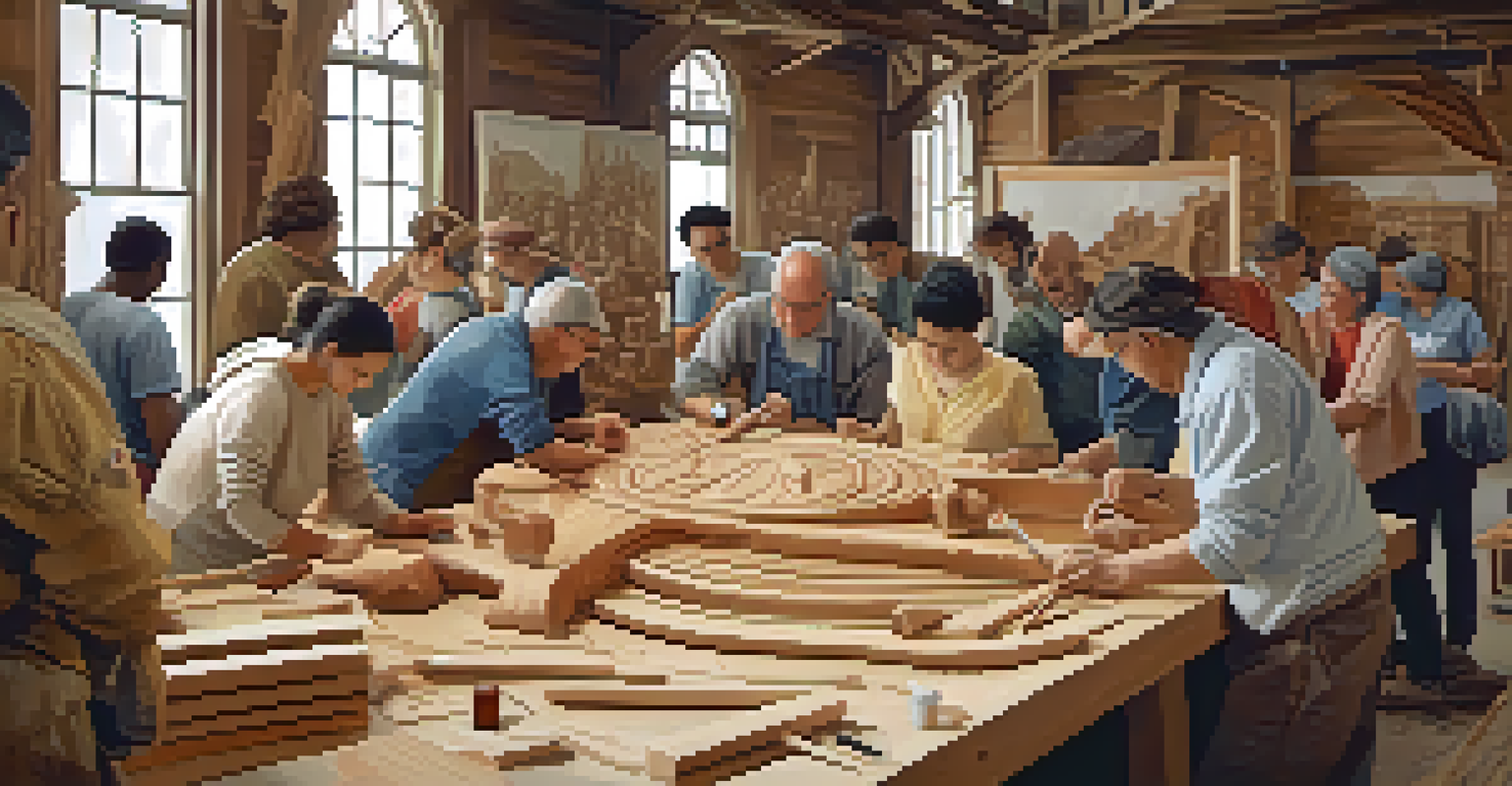Artistic Considerations in Carving for Restoration Projects

Understanding the Historical Context of Carving
When embarking on a restoration project, understanding the historical context of the original carving is crucial. Carvings often reflect the artistic styles, materials, and techniques of their time, offering insights into cultural values and practices. For example, a Gothic-era carving will differ significantly in style and execution compared to a Baroque piece, not just in aesthetics but also in purpose.
Art is the most beautiful of all lies; it is a mirror that reflects the society that creates it.
Researching the history behind the artwork allows restorers to make informed decisions that honor the original intent. This involves exploring the artist's influences, the tools they used, and the materials at their disposal. By delving into these elements, restorers can ensure that their work aligns with the original vision, preserving the piece's authenticity for future generations.
Moreover, understanding the historical context can guide restorers in identifying appropriate restoration techniques. For instance, knowing whether the original piece was painted or left in its natural wood finish can affect how one approaches the restoration process. This careful attention to history fosters a deeper appreciation for the craftsmanship involved.
Selecting the Right Tools for Restoration
Choosing the right tools is a fundamental aspect of any carving restoration project. Each tool has a specific purpose and can significantly influence the outcome of the carving. For instance, chisels come in various shapes and sizes, each designed to create different textures and details, much like a painter selects brushes.

Additionally, modern tools can offer precision and efficiency, but they may not always replicate the techniques of the original artist. A balance must be struck between contemporary tools and traditional methods to preserve authenticity while ensuring the restoration is effective. For example, using a mallet with chisels can help mimic the force and technique of the original carving.
Historical Context is Key
Understanding the historical background of a carving ensures restorers make informed decisions that honor the original intent and craftsmanship.
Restorers should also consider the condition of the existing piece when selecting tools. If the original carving is fragile, lighter, more delicate tools may be necessary to avoid causing further damage. This thoughtful selection process can make a significant difference in achieving a successful restoration.
Choosing Appropriate Materials for Restoration
The materials used in carving restoration play a pivotal role in the overall success of a project. Authenticity is key; using materials that closely match the original can help maintain the piece's integrity. This might mean sourcing specific types of wood, stone, or even pigments that were originally used.
Preserving the past is not a matter of nostalgia; it is a way of understanding who we are today.
In some cases, restorers may need to create custom materials to replicate the original look and feel. For example, if the original wood has deteriorated, finding a similar species can be essential. This attention to detail ensures that any additions or repairs blend seamlessly into the existing work.
Moreover, choosing sustainable materials can reflect a commitment to environmental stewardship, which is increasingly important in today’s art restoration practices. By opting for eco-friendly options, restorers not only honor the original work but also contribute to preserving the planet, creating a win-win situation.
Balancing Restoration with Conservation Ethics
In the world of art restoration, there's a delicate balance between restoration and conservation ethics. Restorers must decide how much of the original piece to restore and when to leave certain elements untouched. This decision often hinges on the philosophy of minimizing intervention to preserve the integrity of the work.
For instance, if a carving has significant losses or damages, a restorer might opt for a minimal approach, ensuring that any new work is distinguishable from the original. This practice helps to preserve the story of the piece and the artist’s original intent. It’s a bit like patching a favorite old sweater; you want to fix it without losing its character.
Tools and Materials Matter
Selecting the right tools and materials is crucial for achieving a successful restoration that maintains the authenticity of the original work.
Understanding these ethical considerations is vital for any restorer. Engaging with the artwork means acknowledging its history, which includes the marks of age and wear. Embracing this philosophy allows restorers to honor not only the artistry but also the life the piece has lived.
Incorporating Modern Techniques in Restoration
While respecting traditional methods, modern technology offers exciting opportunities for enhancing restoration projects. Techniques such as 3D scanning and printing can create precise replicas of damaged areas, allowing for intricate restoration work that would be difficult by hand. This innovation can breathe new life into a piece while remaining true to its original design.
Additionally, digital tools can assist in planning restorations by providing visualizations of potential outcomes. For example, software can simulate how a restoration might look, allowing restorers to experiment with different approaches before making physical changes. This can save time and resources while ensuring the artistic vision remains intact.
However, it’s essential to use modern techniques judiciously. The goal is not to overshadow the original work but to enhance and support it. By integrating both traditional craftsmanship and modern innovations, restorers can achieve a harmonious balance that respects the past while embracing the future.
Engaging with the Community and Stakeholders
Engagement with the community and stakeholders is vital for successful restoration projects. Art often holds significant cultural and historical value, and involving local communities can foster a sense of ownership and pride. This collaboration can lead to a richer understanding of the artwork and its importance within the community.
For example, involving local historians or artists in the restoration process can provide valuable insights that may not be evident to the restorer alone. These collaborations can also enhance the storytelling aspect of the piece, allowing the community to share their narratives and experiences connected to the artwork.
Community Engagement Enhances Value
Involving the community in restoration projects fosters a sense of ownership and enriches the understanding of the artwork's cultural significance.
Furthermore, hosting workshops or community events around the restoration process can demystify the work being done and educate the public about the importance of preserving cultural heritage. This open dialogue creates a supportive environment, ensuring the restoration is a shared journey rather than a solitary task.
Documenting the Restoration Process
Documenting the restoration process is an essential step that often goes overlooked. Keeping detailed records of the techniques used, materials selected, and decisions made provides valuable information for future restorers. This documentation acts like a roadmap, guiding those who may work on the piece in the years to come.
Additionally, thorough documentation can also serve as a historical record that contributes to the broader understanding of art restoration practices. It can highlight the challenges faced and the creative solutions implemented, enriching the field’s body of knowledge. Think of it as writing a diary for the artwork, capturing its journey.

Moreover, sharing this documentation with the public can enhance appreciation for the craftsmanship involved in restoration. By showcasing the behind-the-scenes work, restorers can foster a deeper connection between the audience and the artwork, celebrating both the past and the present.